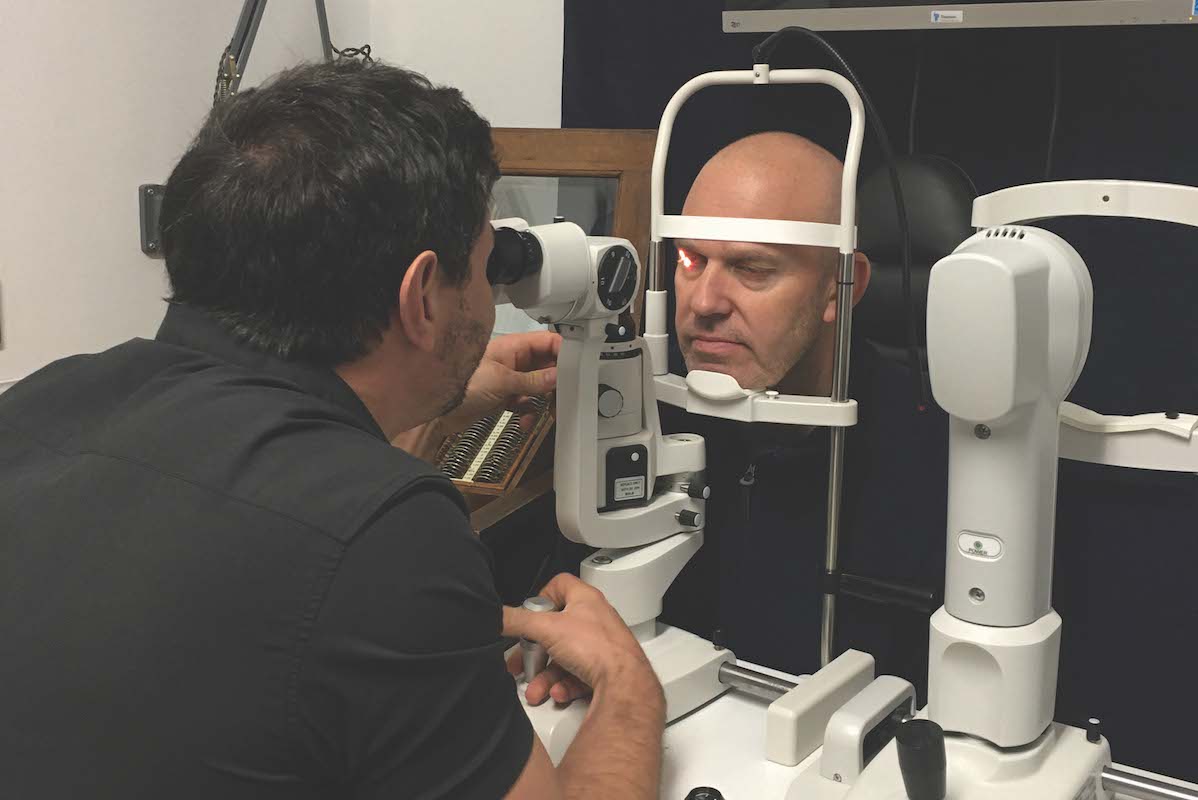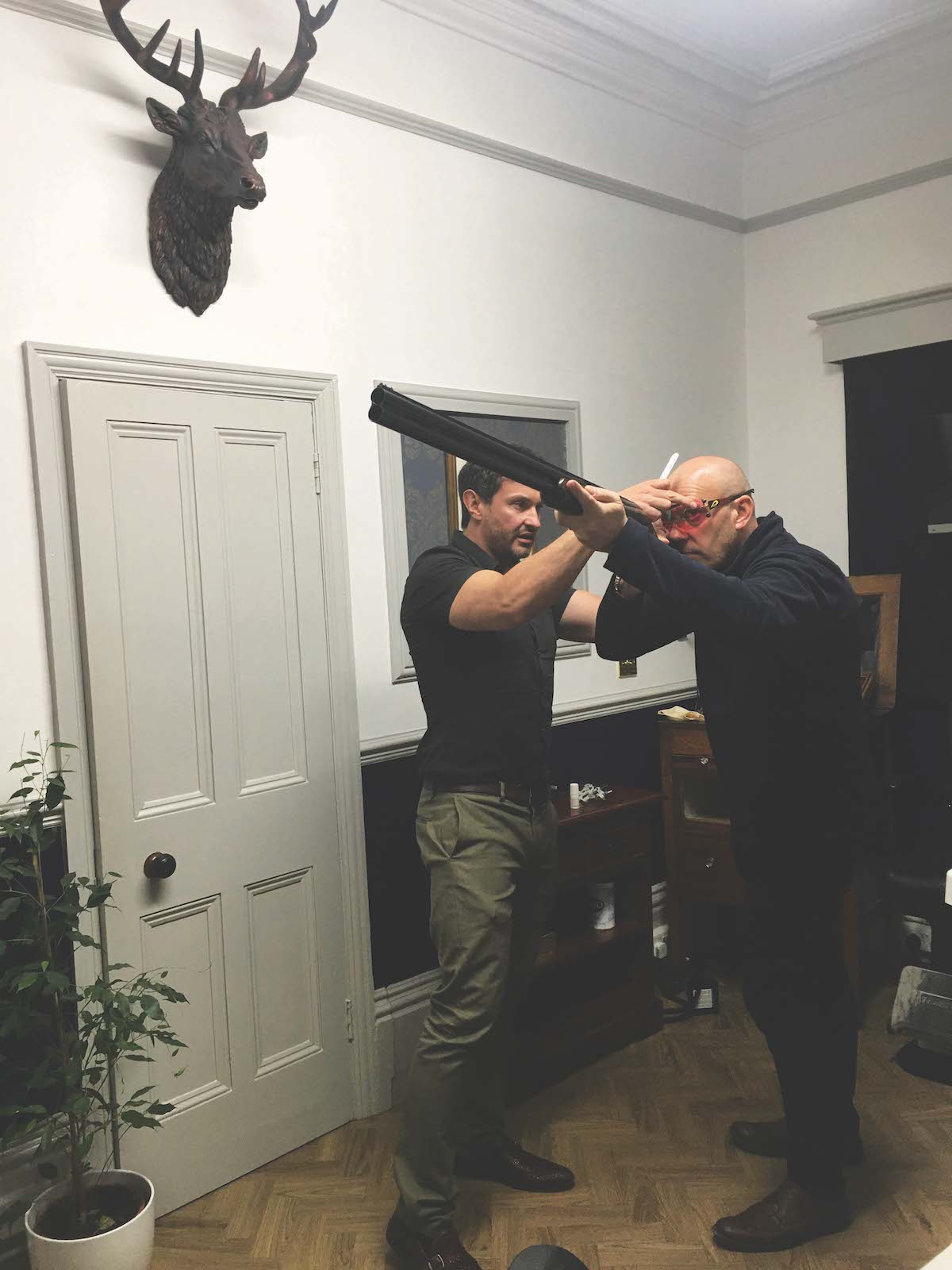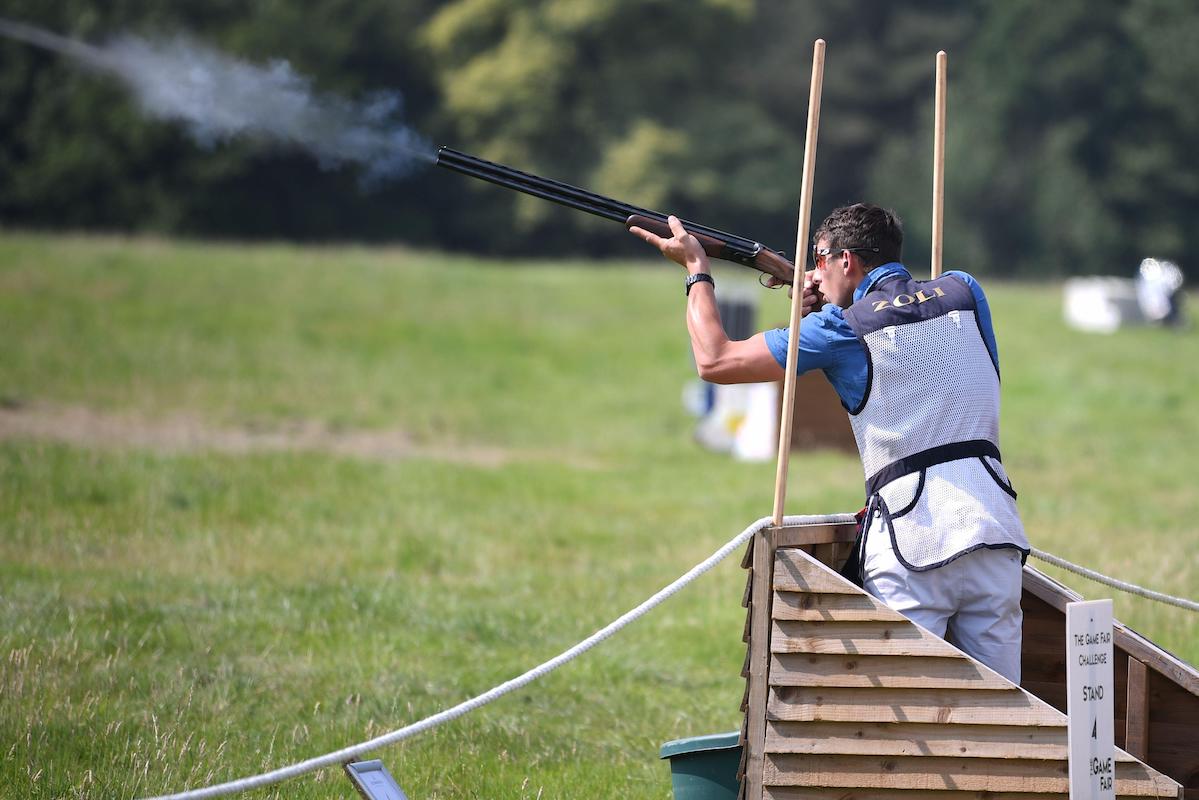Win CENS ProFlex DX5 earplugs worth £1,149 – enter here
Is your eyesight affecting your shooting?

Unless you’re blessed with devilish good luck, the less visible a target, the harder it is to hit. While many of us are fortunate enough to have eyesight that, with the help of glasses, perhaps, is serviceable enough to see us through busy days at our desks, behind the wheel or out doing work in the field, shooting requires more from our vision. (Read can a shooter with one eye shoot legally?)
Eyesight affecting your shooting?
Ed Lyons, a sports optometrist, has seen it all. As one of the UK’s leading shooting vision consultants, he’s helped hundreds of Shots to point their barrels with precision rather than pot luck. He’s witnessed his fair share of unusual conditions, but most of Ed’s clients suffer from a handful of common complaints that many of us will be familiar with. So, if your sight picture is already looking vaguer than a party manifesto at election time, don your specs and read on – you may see something useful.

Ed Lyons has helped many Shots overcome vision issues and improve their scores
Visual acuity issues
Visual acuity is the term used to define retinal sharpness or resolution. Simplistically, we commonly refer to ourselves as being long-sighted or short-sighted to describe our inability to bring objects that are close by or in the distance into sharp focus. Additionally, this lack of sharpness can be caused by an astigmatism, which is when the eye takes on a slightly oval shape, like a rugby ball.
Book yourself into a high-street optician and they’ll do an excellent job of prescribing you a pair of glasses or contact lenses that’ll bring the everyday back into focus. If you’re lucky, they may even tell you that you have 20/20 vision, which is the magic number that most of us think of as the gold standard. The thing is, 20/20 vision is far from perfect, and shooting isn’t an ‘everyday’ pursuit – even if many of us dream of doing it every day. (Read could prescription shooting glasses make all the difference?)
“Shooting places demands on our eyesight that go well beyond what’s required of them in most other jobs and pastimes,” says Ed. “It’s vital for Shots to be able to focus on targets quickly and accurately, particularly when they’re passing across complex backgrounds. Frankly, it’s unlikely that high-street solutions are going to be up to the job.
“Unfortunately, the term 20/20 isn’t that useful either. All it shows is that you have ‘normal’ eyesight. The first number refers to the distance of an eye chart in feet, and the second number tells us the distance that a normal person is able to clearly read that chart. So, 20/20 vision shows that at 20ft you can read a chart or see a target that’s designed to be seen at 20ft. 20/15 eyesight is a bit better, and 20/25 a bit worse.
“For the majority of acuity problems, prescribing high-resolution lenses that feature high-purity optics will make a significant difference to a shooter’s scores. The unsurpassed optical quality of the lenses that I can offer sets my practice apart from the big high-street chains.”
As we get into early middle age, our near sight begins to suffer because the lenses in our eyes become cloudier and less supple, which is why most of us end up reaching for prescription glasses when reading. However, our distance sight remains fairly consistent from the age of about 10 until we hit our sixties. So, if you’re an older shooter, it makes sense to get your distance sight checked out, not just your near sight.
“Acuity can also be compromised by a host of other factors that some opticians may consider irrelevant to everyday performance, such as dry eyes and fatigue,” says Ed. “But for athletes competing at a high level these conditions are far from trivial, which is why it’s important to find an optometrist who has a solid knowledge of shooting.”
Shooting places demands on our eyesight that go beyond what’s required in most sports
Eye dominance
Eye dominance can have a spectacular effect on shooting ability, especially if it’s mismatched with handedness. For example, a right-handed person with a dominant left eye will really struggle to correctly align the barrel with the target because their aim will be off. “Unfortunately, there are still lots of people out there insisting that we must all shoot with both eyes open regardless of eye dominance,” says Ed. “It’s just not the case. There are many champion Shots, even at Olympic level, who shoot quite happily without using both eyes. (Read more about eye dominance here.)
“In an ideal world we’d all be able to train our brains to cope, and some Shots have successfully done this. But most people with dominance problems will find it easier to shoot with some method of occlusion.
“This can be as simple as temporarily closing or partially closing one eye, which will keep your peripheral vision intact when first sighting the target. More commonly, though, I’ll recommend an occlusion contact lens or foil filters for glasses.”
While most Shots will find that dominance consistently favours one eye, some have to contend with it fluctuating from left to right and back again, seemingly on a whim. This is enormously frustrating. “A large part of our visual system is muscular,” says Ed, “which means that eye dominance can become affected by stress, tiredness, dehydration, glucose levels, hormone levels and even reactions to some medications. Living a healthy lifestyle can really help.”

Shooting glasses protect the eyes from UV and clay fragments – and they look pretty cool too
Peripheral problems
For obvious reasons, the ability to exercise good peripheral vision is extremely beneficial for athletes shooting disciplines such as Sporting and Skeet, and for anyone shooting live quarry of almost any sort. Not surprisingly, Ed sees a lot of clients worried that the world is crowding in on them.
“Sadly, lack of peripheral vision can be a symptom of some particularly nasty conditions, such as multiple sclerosis, brain tumours, glaucoma, stroke and so on,” says Ed. “So, if your peripheral vision begins to worsen, then please seek professional help.
“On a more positive note, take comfort from Shots such as the amazing Alan Warren, who can hit almost any target despite having vision only in one eye. In many cases, peripheral vision issues can be overcome by simply adapting your shooting technique.
“I am also an advocate of improving peripheral vision through effective practice. Is it any surprise that our peripheral vision isn’t what it was? Humans evolved to be out in the open, constantly scanning their surroundings for both prey and predators. But these days we spend much of our time focused right in on our TVs, computers and mobile phones. So, log off Facebook, get outside and reacquaint yourself with your peripheral vision.”
Colour and contrast
Shooting glasses. They’re probably every clay Shot’s favourite accessory and they’re now becoming more popular out in the field too. Why? It’s because they protect our eyes from UV (ultraviolet), clay fragments, wood splinters and, of course, they can look pretty cool. Coloured lenses can also help to solve issues with colour and contrast, in particular scenarios such as shooting with overcast skies or the acquisition of black clays against a backdrop of green trees.
“Pilla, with its ZEISS lenses, is still the most prestigious brand,” says Ed, “but recently I’ve been impressed with RE Ranger’s Riact lenses. Apparently, RE Ranger has used artificial intelligence (AI) to develop lenses that promise better depth perception, a stronger colour boost for picking out coloured clays and improved low-light performance. How valid the AI connection is I don’t know, but I’ve been very impressed with them, and so have my clients.
“Choosing the correct colour, or set of colours, is down to personal choice and the environment you’ll be shooting in. Just bear in mind that orange clays are very popular in the US, so many of the North American brands’ lenses will be biased towards this hue.”
Most shooting glasses comprise a single wrap-around glazed unit that is rarely available as a prescription lens. Two possible solutions for those of us who need prescription lenses are wrap-around shooting glasses that take prescription inserts, or twin-lens models that look just like regular sunglasses.
“Inserts can be a wonderful solution for many people,” says Ed, “but others find that they readily fog up in some climatic conditions or when the wearer is being physically active. In these cases, the only solution is the twin-lens approach, which means you’ll lose the all-over coverage that a wrap-around design provides. In my experience, though, we don’t really notice the area around the bridge of the nose and, what’s more, small inserts will provide even less visual coverage anyway.”
Co-ordination and muscle weakness
A lot of us, perhaps the majority, live sedentary lives that leave us with weak limbs, a feeble core and, yes, out-of- condition eyes. “This issue became very significant during 2020-21,” says Ed. “During the lockdown periods I took scores of calls from some of the world’s best Shots who, unable to practice, were concerned that their eye performance would suffer due to lack of use. Their eye muscles just weren’t the exercise they were used to.”
These calls for help inspired Ed to develop his Sports Vision Kit, which is essentially a gym for your eyes. “It’s a series of exercises that improve muscle tone, depth perception and speed,” says Ed. “They only take 15 minutes out of your day to complete, and they’re fun to do. I didn’t want them to be a grind, so they’ve been developed to condition your eyes rather than exhaust them.
“The reception has been better than I could have hoped for. Athletes from many kinds of disciplines that require hand-eye co-ordination, such as tennis and cricket as well as shooting, have taken to them. I’ve also had a lot of clients reporting that the exercises have helped them with headaches and migraines.”
It’s worth reminding ourselves that there’s a thriving target-shooting scene for people with visual impairments, so shooting isn’t just a preserve for the sighted. However, quite naturally, most of us want to get the very best from the sight that we do have – it’s a sense that we must learn to value and care for. It’s also important to appreciate that while you can get away with winging a clay, shooting live quarry quite rightly demands a level of accuracy that can only be achieved with good vision.
Related Articles
Get the latest news delivered direct to your door
Subscribe to Shooting Times & Country
Discover the ultimate companion for field sports enthusiasts with Shooting Times & Country Magazine, the UK’s leading weekly publication that has been at the forefront of shooting culture since 1882. Subscribers gain access to expert tips, comprehensive gear reviews, seasonal advice and a vibrant community of like-minded shooters.
Save on shop price when you subscribe with weekly issues featuring in-depth articles on gundog training, exclusive member offers and access to the digital back issue library. A Shooting Times & Country subscription is more than a magazine, don’t just read about the countryside; immerse yourself in its most authoritative and engaging publication.







